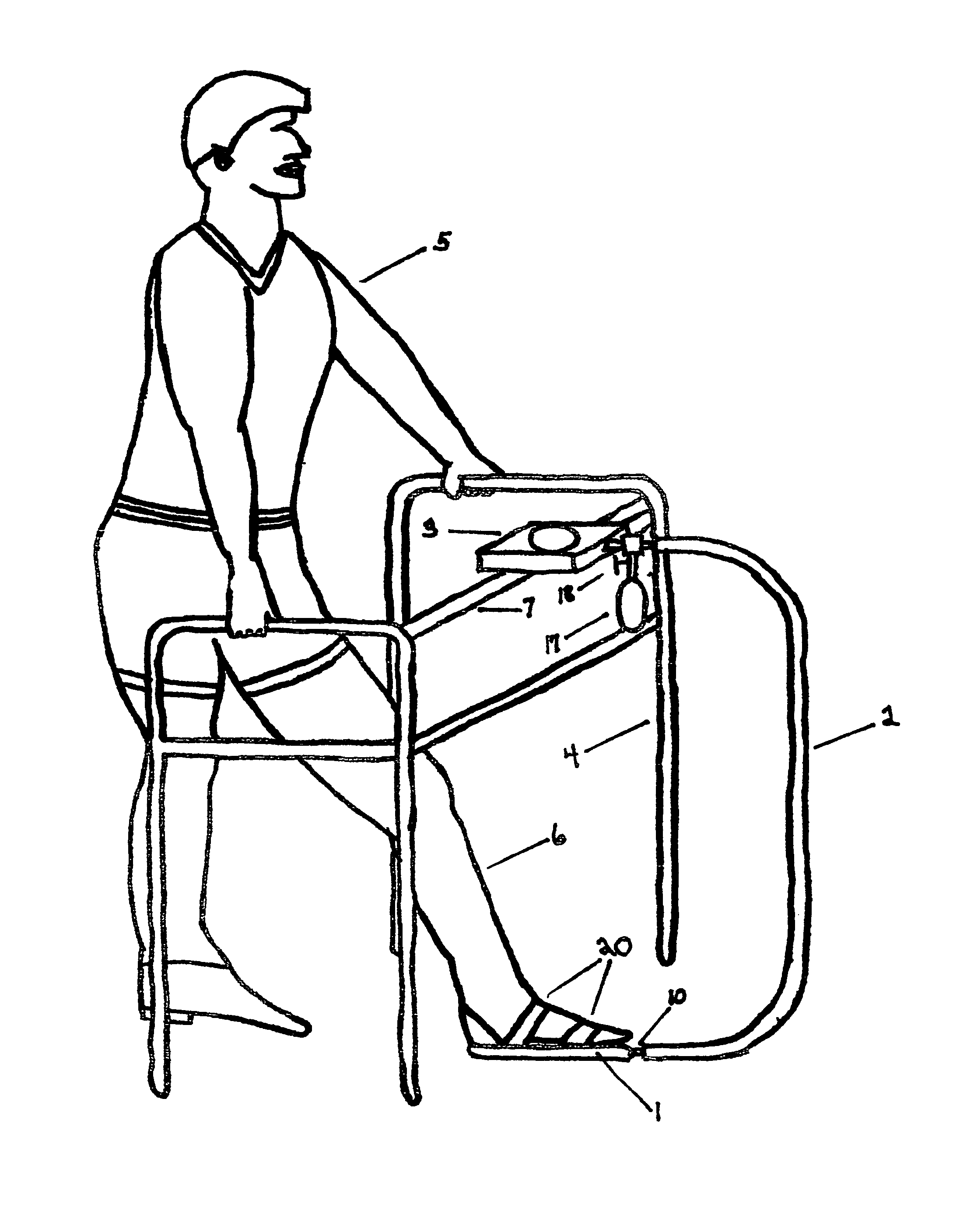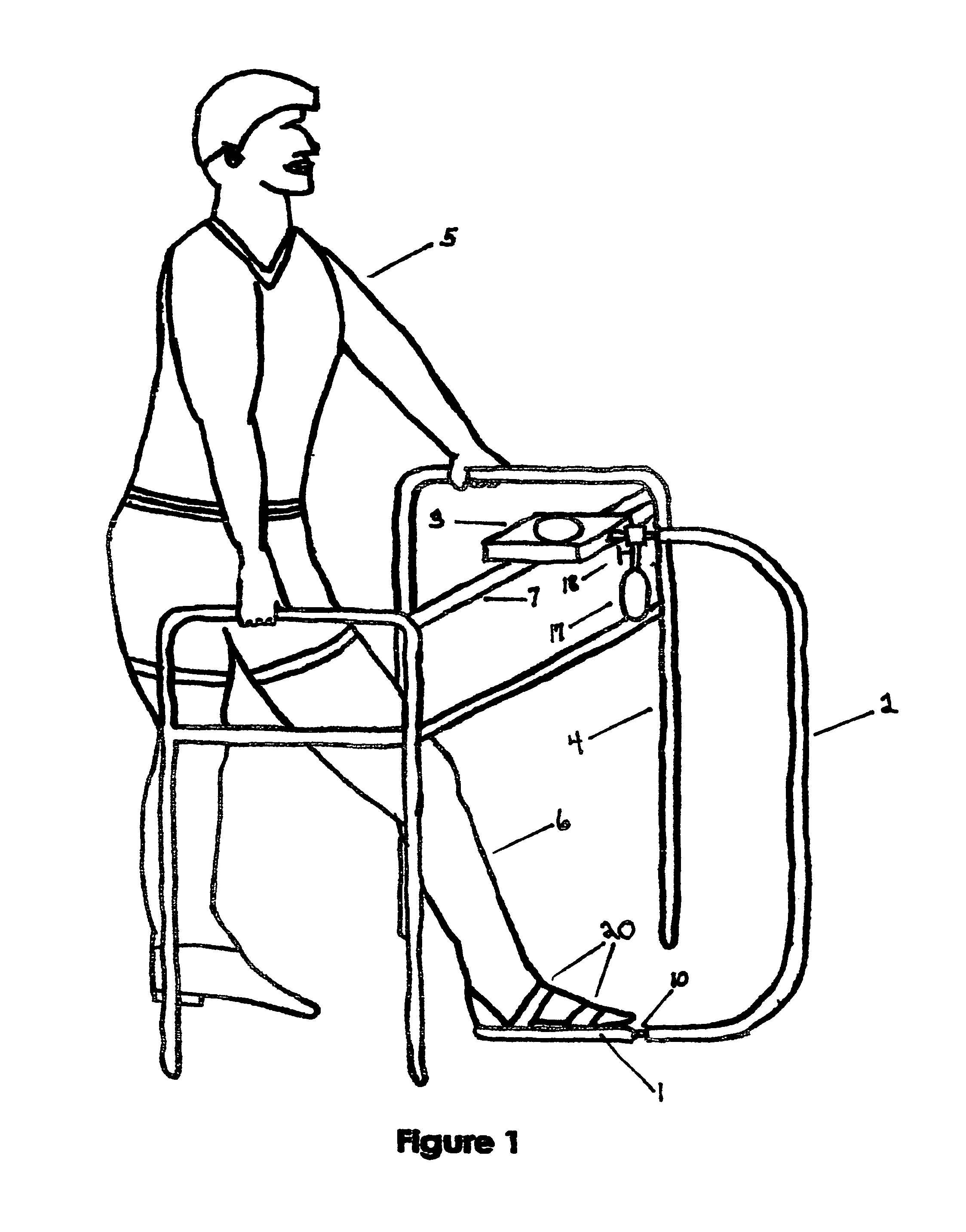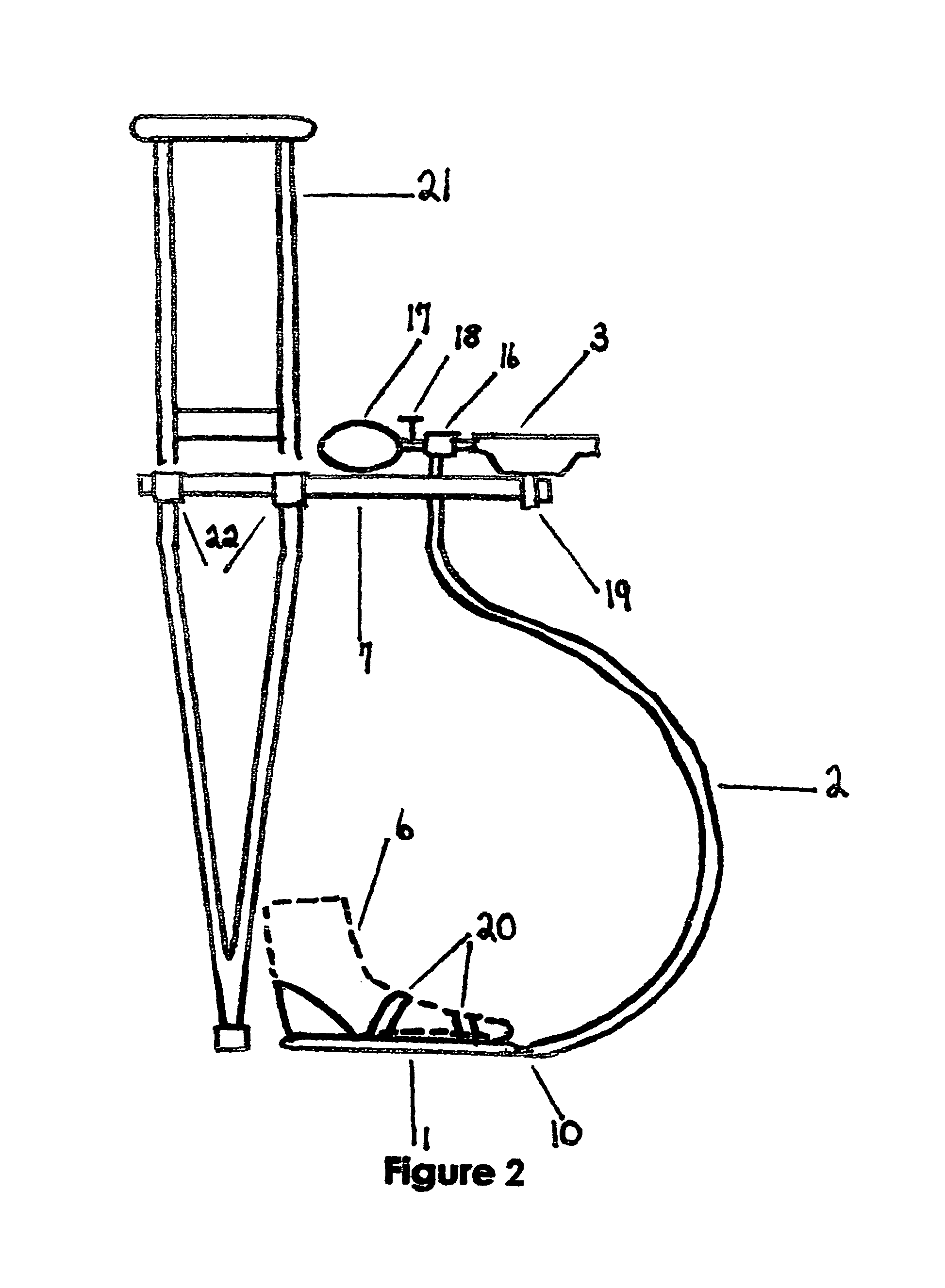Visual warning device for weight bearing
a warning device and weight bearing technology, applied in the field of visual warning devices for weight bearings, can solve the problems of device failure to alarm, potential injury, and eminent risk of further injury
- Summary
- Abstract
- Description
- Claims
- Application Information
AI Technical Summary
Benefits of technology
Problems solved by technology
Method used
Image
Examples
embodiment
Preferred Embodiment
[0085]The first embodiment of the device is illustrated in FIG. 1 with further detailing in FIGS. 2 and 3. FIG. 1 represents user (5), standing with walker (4), wearing foot appendage component containing bladder (1). This is fastened by straps (20) to the foot of user's lower extremity requiring limited weight bearing (6). By stepping on said bladder (1) urge is transmitted via tube or hose (2) fastened to bladder (1) by nozzle (10) extending upward to three way connector (16) seen in FIG. 2. Opposing end of said connector (16) attaches to nozzle of said gauge (3). Said user (5) can visualize said gauge (3) attached to horizontal bar (7) of said walker (4) by bracket (19). Said user (5) or caregiver can easily observe urge applied by said foot (6) requiring limited weight bearing. Squeeze bulb (17) attached to said connector (16) forces air into bladder (1) to establish a zero point of pressure with indicator needle (14) noted in FIG. 3. Valve (18) seen in FIG. ...
PUM
| Property | Measurement | Unit |
|---|---|---|
| weight | aaaaa | aaaaa |
| weight | aaaaa | aaaaa |
| weight | aaaaa | aaaaa |
Abstract
Description
Claims
Application Information
 Login to View More
Login to View More - R&D
- Intellectual Property
- Life Sciences
- Materials
- Tech Scout
- Unparalleled Data Quality
- Higher Quality Content
- 60% Fewer Hallucinations
Browse by: Latest US Patents, China's latest patents, Technical Efficacy Thesaurus, Application Domain, Technology Topic, Popular Technical Reports.
© 2025 PatSnap. All rights reserved.Legal|Privacy policy|Modern Slavery Act Transparency Statement|Sitemap|About US| Contact US: help@patsnap.com



